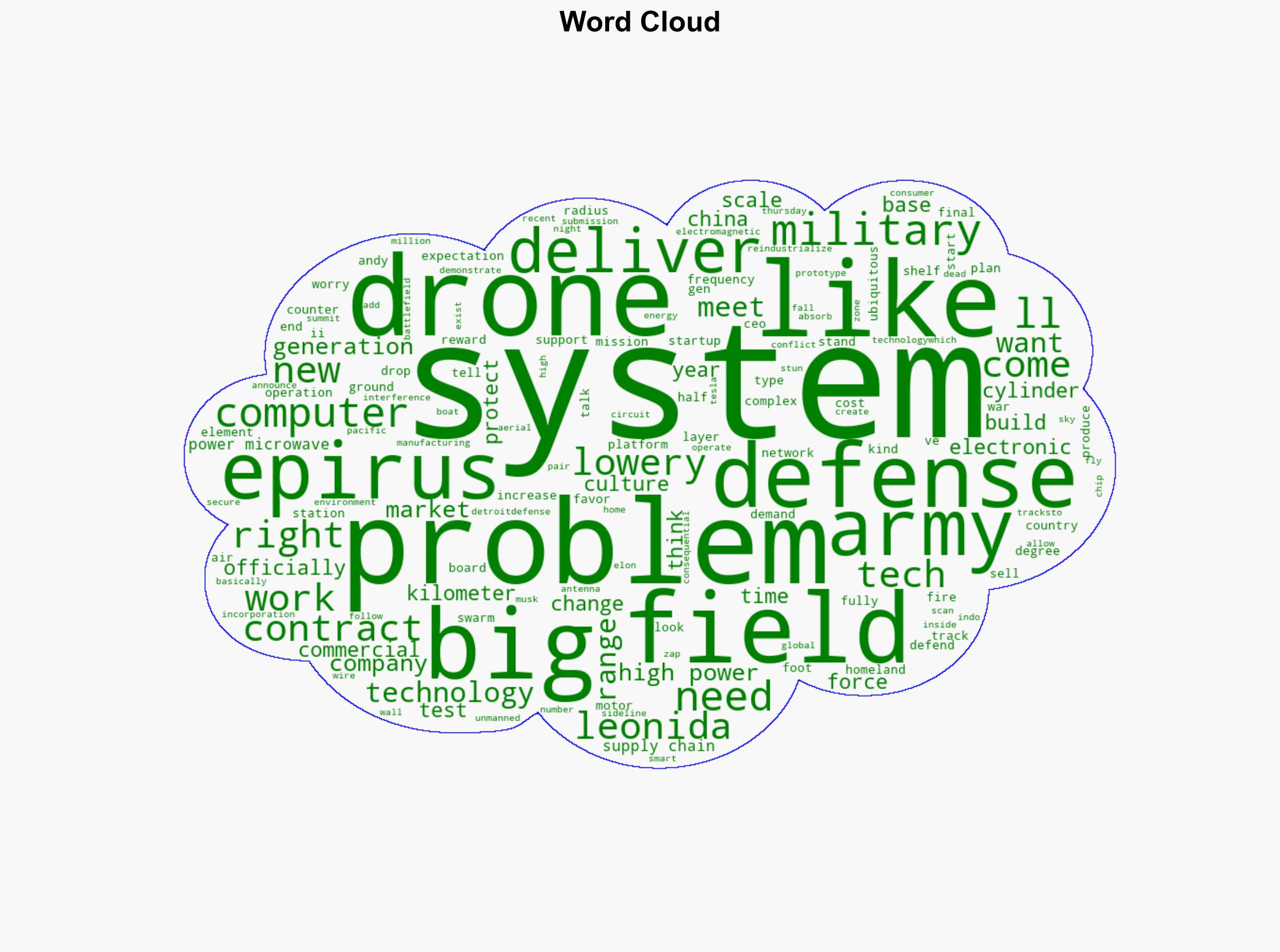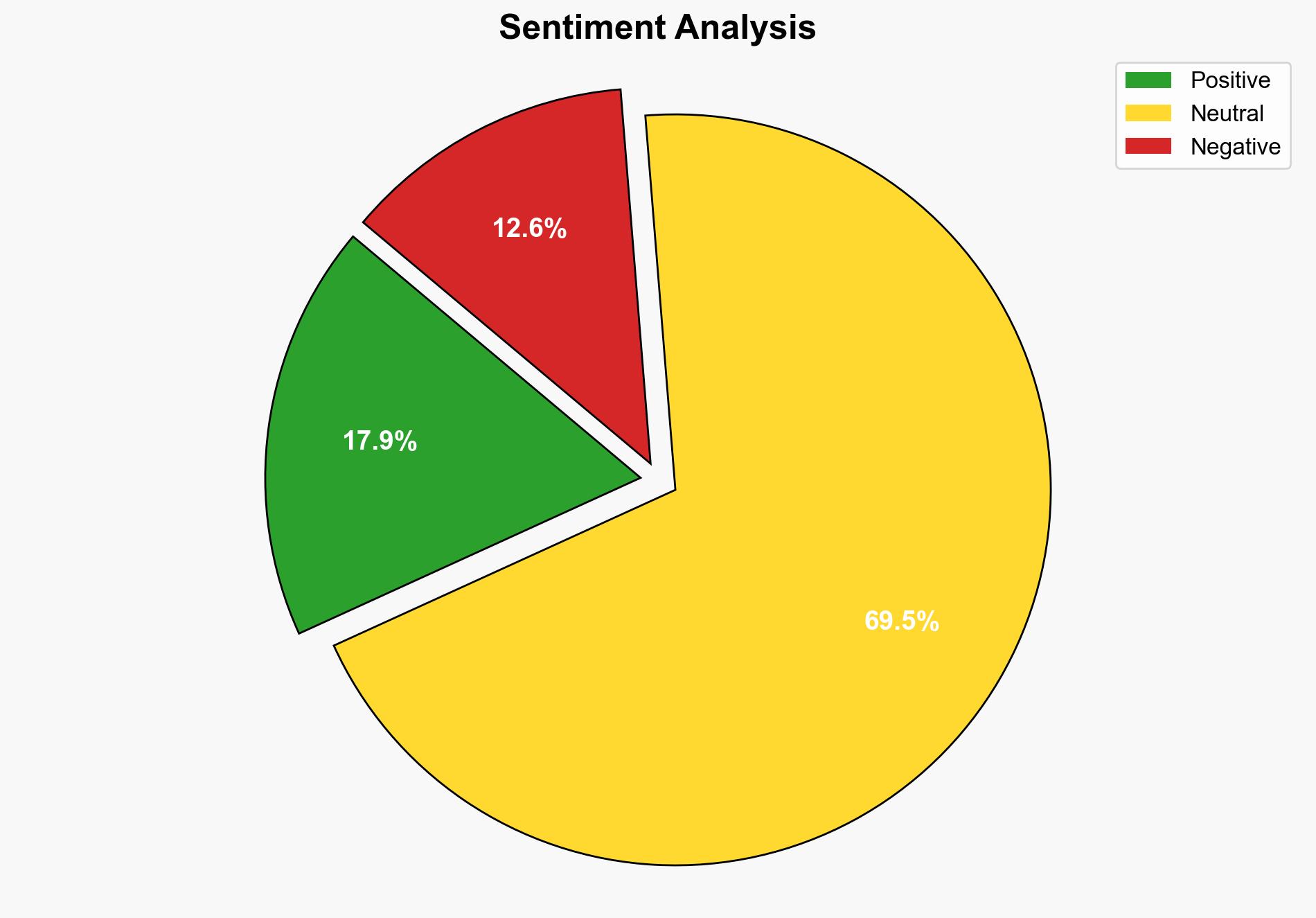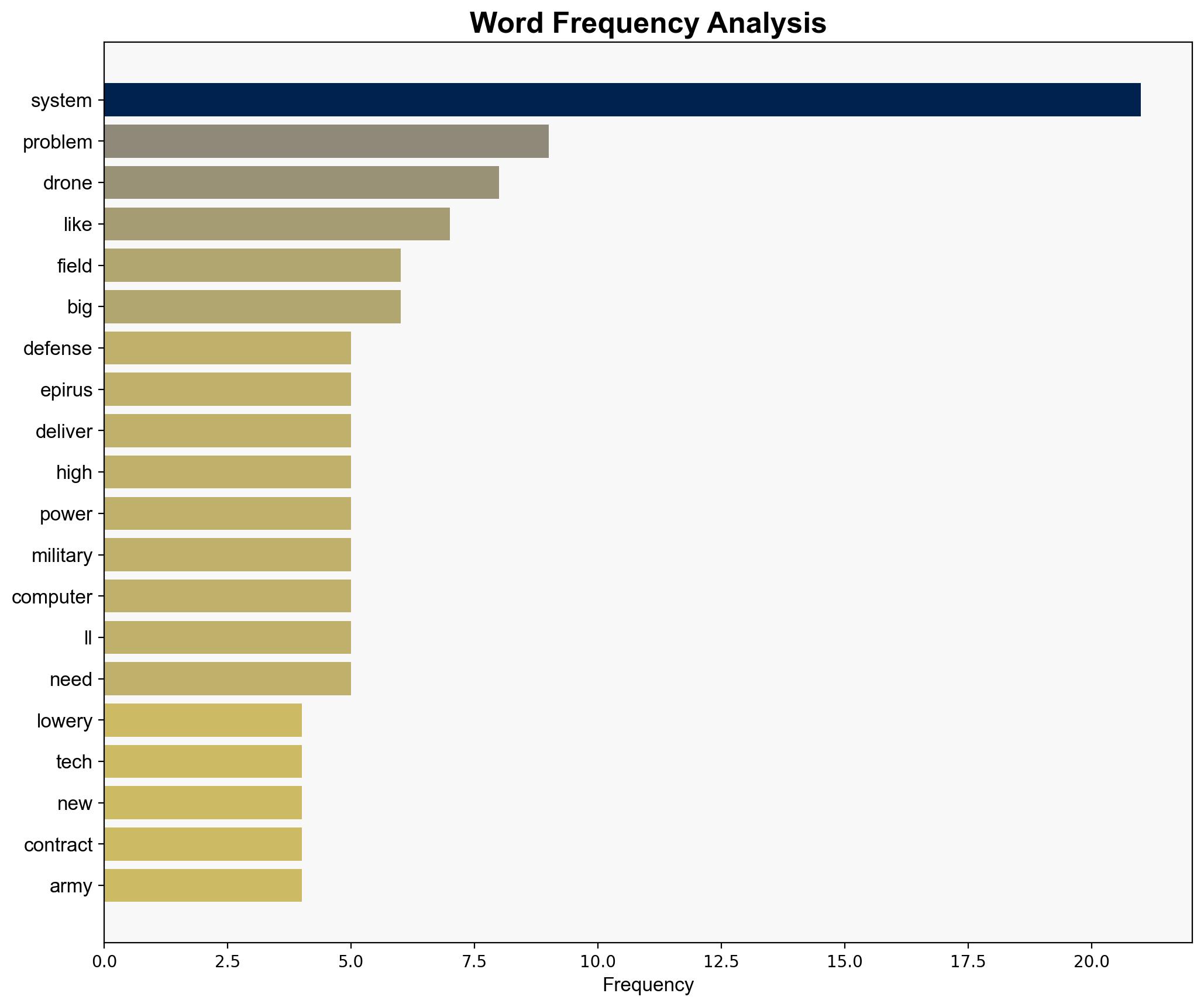Zapping drones swarms into submission – Defense One
Published on: 2025-07-23
Intelligence Report: Zapping Drones Swarms into Submission – Defense One
1. BLUF (Bottom Line Up Front)
The recent developments in high-power microwave systems by Epirus, as evidenced by their new contract with the U.S. Army, represent a significant advancement in counter-drone technology. This capability is crucial for enhancing national security and protecting critical infrastructure. The deployment of these systems could redefine defense strategies against unmanned aerial threats, offering a scalable solution to emerging drone swarms.
2. Detailed Analysis
The following structured analytic techniques have been applied to ensure methodological consistency:
Causal Layered Analysis (CLA)
At the surface level, the contract with Epirus highlights a growing need for advanced counter-drone measures. Systemically, this reflects a shift towards integrating electromagnetic interference technologies in military operations. The worldview suggests an increasing reliance on technology to manage modern warfare threats, while the myth of technological superiority continues to drive innovation in defense.
Cross-Impact Simulation
The deployment of these systems may influence regional security dynamics, potentially deterring adversarial drone operations. Neighboring states might accelerate their own counter-drone capabilities, leading to an arms race in electromagnetic warfare technologies.
Scenario Generation
In a best-case scenario, the successful integration of these systems could lead to enhanced security and deterrence. In a worst-case scenario, adversaries could develop countermeasures, diminishing the effectiveness of these technologies. The most likely scenario involves gradual adoption and iterative improvements in response to evolving threats.
Network Influence Mapping
Key influencers include defense contractors, military strategists, and technology innovators. Their interactions will shape the trajectory of counter-drone technology development and deployment.
3. Implications and Strategic Risks
The integration of high-power microwave systems poses potential risks, including technological dependency and the possibility of electronic warfare escalation. Additionally, the rapid evolution of drone technologies could outpace current defense capabilities, necessitating continuous innovation and adaptation.
4. Recommendations and Outlook
- Invest in research and development to stay ahead of adversary countermeasures.
- Enhance collaboration with allies to standardize counter-drone strategies and technologies.
- Scenario-based projections suggest prioritizing scalable and adaptable solutions to address diverse threat landscapes.
5. Key Individuals and Entities
Andy Lowery
6. Thematic Tags
national security threats, cybersecurity, counter-terrorism, regional focus





